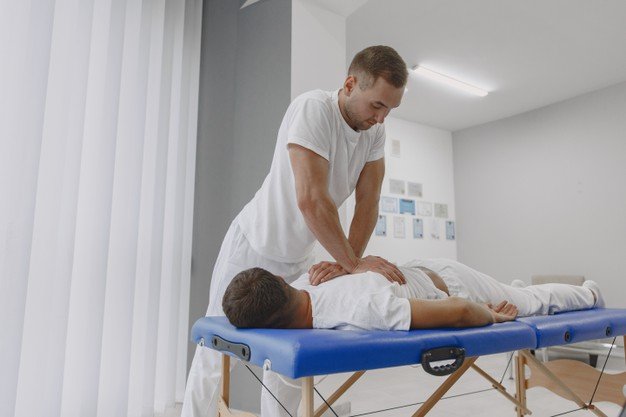When suffering from muscle or joint pain, it is sometimes difficult to know towards which manual medicine it is better to turn. Often confused, the professions of physiotherapist, osteopath and chiropractor still stand out on many points.

The chiropractor
Founded in the United States more than a century ago but recognized in France only since 2002, the chiropraxie, sometimes called chiropractic Where chiropractic, is a alternative medicine aiming to improve the state of health of a patient by working on the strength and mobility of articulations. This specialist is usually called in to solve problems related to the back or spine. the chiropractor or the chiropractrice intervenes by manipulating different parts of the patient’s body in order to provide relief after establishing a diagnosis. This specialist in neuromusculoskeletal system begins by locating various blocking points before looking for the cause and establishing a method of treatment. It is through the communication between the nervous system and the musculoskeletal system that these manipulations make it possible to obtain results by carrying out joint readjustments. The treatments generally involve adapted physical exercises or, if necessary, by modifying the patient’s lifestyle.

The chiropractor is distinguished from the osteopath through a wider field of action, since it can perform more manipulations in order to relieve pain infunctional origin but also pathological. This can concern both tendonitis and low back pain, sciatica, scoliosis, herniated discs, neuralgia, sprains or stiff necks. He also claims a internationally recognized training, which requires 6 years of full-time study.
The osteopath
With a less specific approach and therefore more global than the chiropractor, the osteopath’s mission is to maintain or restore balance between the different structures of the body. His manipulations thus aim to resolve the malfunctions and the blocking points of a part of the body to give it all its mobility. The osteopath only intervenes on problems offunctional origin by means of stretching, pressure or mobilization techniques which depend on the nature of the pain to be treated. A patient can call on him to solve for example problems related to digestive disorders, for sinusitis and other ENT disorders, for insomnia, or again for neuralgia, lumbago or back pain. The osteopath is not supposed to intervene directly on the cervicals. In terms of training, he must prepare a diploma over 5 years in an establishment approved by the Ministry of Health, or go through a university degree in manual medicine-osteopathy.

The physiotherapist
Specialist in motor rehabilitation people with neurological disorders or from paralysis, the masseur-physiotherapist also works with patients of all ages for respiratory ailments Where cardiovascular. It proceeds with the help of massages and manipulations on the affected area, relying on a prescription prescribed by a doctor. As the rehabilitation process is generally carried out over time, he can define medical gymnastics that the patient can perform, first under his control and then alone, based on a doctor’s diagnosis and examination of the X-rays. Its range of action ranges from simple sprains to accident patients severe, including scoliosis, low back pain, stiff necks or muscle trauma. He can practice in hospitals and rehabilitation centers, or in a liberal way, after a training of 5 years.

Dedicated work clothes
All these interventions involve long-term follow-up and are also accompanied by effective preventive treatments. In order to be comfortable in their movements, these professionals can turn to light clothes such as elasticated waist medical pants, tunics with short sleeves Where long, or work coats, accompanied by medical clogs or non-slip shoes. Hasson, SNV Pro and other brands regularly offer new ranges of clothing that meet the requirements of these trades.


